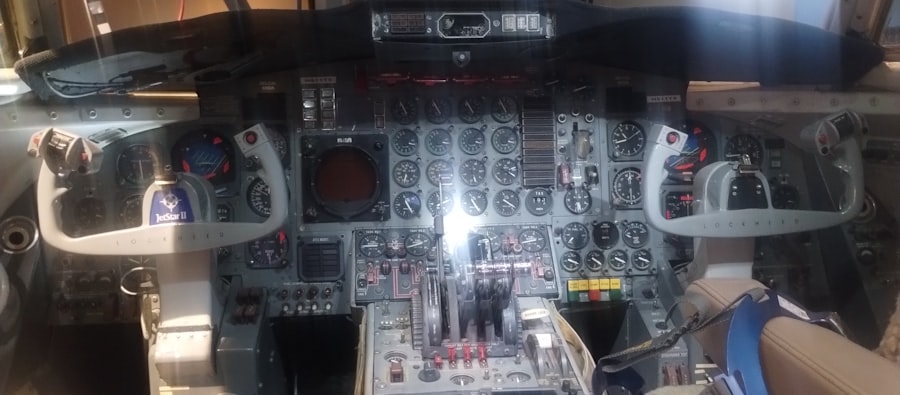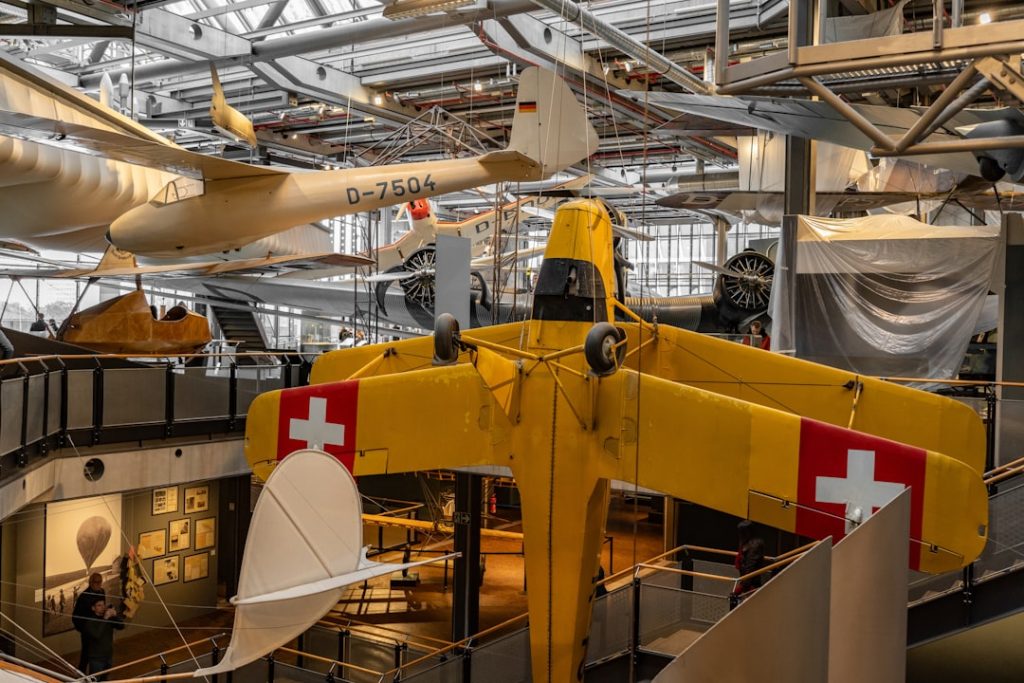The HAL Aerospace Museum, located in Bengaluru, India, is a testament to the rich legacy of aviation and aerospace development in the country. Established in 2001 by Hindustan Aeronautics Limited (HAL), the museum was conceived as a means to showcase the achievements of Indian aerospace engineering and to inspire future generations. The museum’s inception was driven by the need to preserve the history of aviation in India, particularly the contributions made by HAL, which has been a pivotal player in the Indian aerospace sector since its founding in 1940.
The museum serves not only as a repository of historical artifacts but also as an educational platform that highlights the evolution of aviation technology in India. The museum’s location in Bengaluru is significant, as the city is often referred to as the “Aerospace Capital of India.” This designation stems from the concentration of aerospace companies, research institutions, and educational establishments in the region. The HAL Aerospace Museum stands as a symbol of this vibrant ecosystem, showcasing the journey of Indian aviation from its nascent stages to its current status as a global player.
Over the years, the museum has expanded its collection and improved its facilities, making it a must-visit destination for aviation enthusiasts, students, and families alike.
Key Takeaways
- HAL Aerospace Museum was established in 2001 and showcases the rich history of aviation in India, with a focus on Hindustan Aeronautics Limited (HAL).
- The museum features a wide range of exhibits and aircraft on display, including vintage planes, helicopters, and fighter jets, highlighting India’s aerospace achievements.
- Visitors can enjoy interactive simulators and virtual reality experiences, allowing them to get a firsthand feel of flying and operating aircraft.
- The museum offers educational programs and workshops for students and aviation enthusiasts, providing insights into the science and technology of aerospace engineering.
- Special events and exhibitions are regularly organized at the museum, offering unique opportunities to learn about the latest developments in aerospace technology and innovation.
Exhibits and Aircrafts on Display
The HAL Aerospace Museum boasts an impressive array of exhibits that chronicle the history of aviation in India. Among its most notable displays are full-scale models and actual aircraft that have played significant roles in both military and civilian aviation. The museum features iconic aircraft such as the HAL Tejas, India’s indigenous light combat aircraft, which represents a significant milestone in the country’s defense capabilities.
Visitors can also view the HAL Dhruv, an advanced light helicopter that has been instrumental in various operations across India. In addition to these modern marvels, the museum houses historical aircraft that reflect the evolution of aviation technology over the decades. For instance, the de Havilland Vampire, one of the first jet fighters used by the Indian Air Force, is on display alongside vintage aircraft like the Hawker Hunter and the MiG-21.
Each exhibit is accompanied by detailed information panels that provide insights into the aircraft’s specifications, operational history, and contributions to Indian aviation. The thoughtful curation of these exhibits allows visitors to appreciate not only the technological advancements but also the stories behind each aircraft.
Interactive Simulators and Virtual Reality Experiences

One of the standout features of the HAL Aerospace Museum is its commitment to providing an engaging and immersive experience for visitors through interactive simulators and virtual reality (VR) experiences. These modern technologies allow guests to step into the shoes of a pilot or engineer, offering a unique perspective on what it takes to operate and maintain advanced aircraft. The flight simulators available at the museum replicate real-life flying conditions, enabling users to experience takeoffs, landings, and aerial maneuvers in a controlled environment.
The virtual reality experiences take this engagement a step further by immersing visitors in realistic scenarios that highlight various aspects of aviation. For example, users can participate in simulated missions that require them to navigate through challenging weather conditions or engage in aerial combat. These experiences are designed not only for entertainment but also for education, as they provide insights into the complexities of flight operations and aircraft systems.
By incorporating such interactive elements, the museum effectively bridges the gap between theoretical knowledge and practical application, making learning about aviation both fun and informative.
Educational Programs and Workshops
| Program Name | Target Audience | Duration | Outcome |
|---|---|---|---|
| STEM Workshop | High school students | 2 days | Increased interest in STEM fields |
| Financial Literacy Program | College students | 4 weeks | Improved financial management skills |
| Environmental Conservation Seminar | Community members | 1 day | Increased awareness of environmental issues |
The HAL Aerospace Museum places a strong emphasis on education, offering a variety of programs and workshops aimed at students and aviation enthusiasts. These initiatives are designed to foster interest in aerospace engineering and related fields among young minds. The museum regularly hosts workshops that cover topics such as aircraft design, aerodynamics, and propulsion systems.
These hands-on sessions allow participants to engage with experts in the field and gain practical knowledge that complements their academic studies. In addition to workshops, the museum organizes guided tours tailored for school groups and educational institutions. These tours are led by knowledgeable staff who provide detailed explanations of the exhibits and answer questions from students.
The interactive nature of these tours encourages curiosity and critical thinking, making them an invaluable resource for educators looking to enhance their curriculum with real-world applications of science and technology. By nurturing a passion for aviation through these educational programs, the HAL Aerospace Museum plays a crucial role in shaping the future workforce of India’s aerospace industry.
Special Events and Exhibitions
Throughout the year, the HAL Aerospace Museum hosts a variety of special events and temporary exhibitions that celebrate milestones in aviation history or highlight specific themes within aerospace technology. These events often coincide with significant anniversaries or achievements within HAL or the broader Indian aerospace community. For instance, during the celebration of HAL’s founding anniversary, the museum may organize exhibitions showcasing its most significant contributions to aviation over the decades.
Special events also include guest lectures by prominent figures in the aerospace industry, including engineers, pilots, and researchers who share their experiences and insights with visitors. These lectures provide a platform for knowledge exchange and inspire attendees to pursue careers in aviation-related fields. Additionally, themed exhibitions may focus on specific aircraft types or technological advancements, offering deeper dives into particular areas of interest within aerospace engineering.
Such events not only enrich the visitor experience but also foster a sense of community among aviation enthusiasts.
Restoration and Conservation Efforts

The preservation of historical aircraft and artifacts is a critical aspect of the HAL Aerospace Museum’s mission. The museum employs skilled conservators who are dedicated to restoring and maintaining its collection to ensure that future generations can appreciate these important pieces of aviation history. Restoration efforts often involve meticulous work to repair structural damage, repaint surfaces, and replace worn-out components while adhering to historical accuracy.
In addition to restoration projects, conservation efforts extend to proper storage and display techniques that protect artifacts from environmental factors such as humidity and temperature fluctuations. The museum utilizes specialized materials and methods to ensure that exhibits remain in optimal condition over time. This commitment to preservation not only safeguards India’s aviation heritage but also serves as an educational opportunity for visitors interested in conservation practices within museums.
Future Expansion Plans
As interest in aviation continues to grow, so too does the need for expanded facilities at the HAL Aerospace Museum. Plans for future expansion are already underway, with proposals for new exhibit halls that will accommodate additional aircraft displays and interactive installations. These expansions aim to enhance visitor engagement by incorporating cutting-edge technologies such as augmented reality experiences that can further immerse guests in the world of aviation.
Moreover, there are discussions about establishing partnerships with educational institutions to create research centers within or adjacent to the museum. Such collaborations could facilitate hands-on learning opportunities for students pursuing careers in aerospace engineering while also contributing to ongoing research initiatives within the field. By investing in expansion and innovation, the HAL Aerospace Museum aims to remain at the forefront of aerospace education and public engagement.
Visitor Information and Tips for a Great Experience
For those planning a visit to the HAL Aerospace Museum, there are several tips to ensure an enjoyable experience. First and foremost, it is advisable to check the museum’s official website for information on opening hours, ticket prices, and any special events taking place during your visit. The museum typically offers guided tours that provide valuable insights into exhibits; booking these in advance can enhance your understanding of the displays.
Visitors should also consider allocating sufficient time to explore all sections of the museum thoroughly. With numerous aircraft on display and interactive exhibits available, spending at least two to three hours is recommended for a comprehensive experience. Comfortable footwear is essential due to the size of the museum grounds; walking through various exhibits can be quite extensive.
Lastly, engaging with staff members can enrich your visit; they are often eager to share their knowledge about aviation history and answer any questions you may have. In summary, whether you are an aviation enthusiast or simply curious about aerospace technology, a visit to the HAL Aerospace Museum promises an enriching experience filled with history, innovation, and inspiration.


